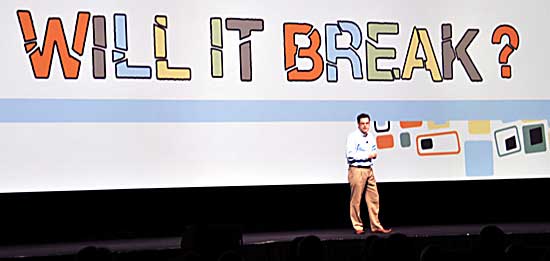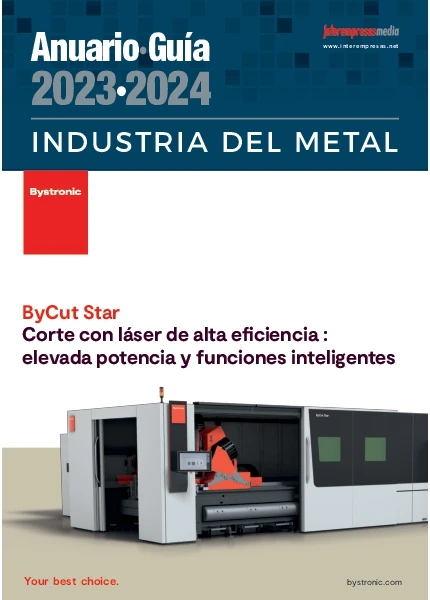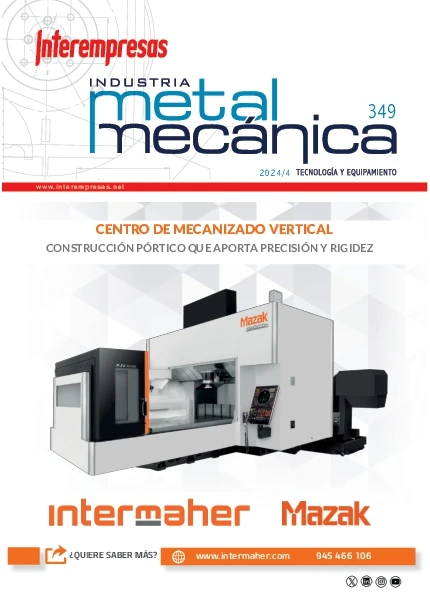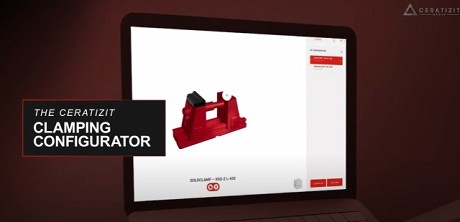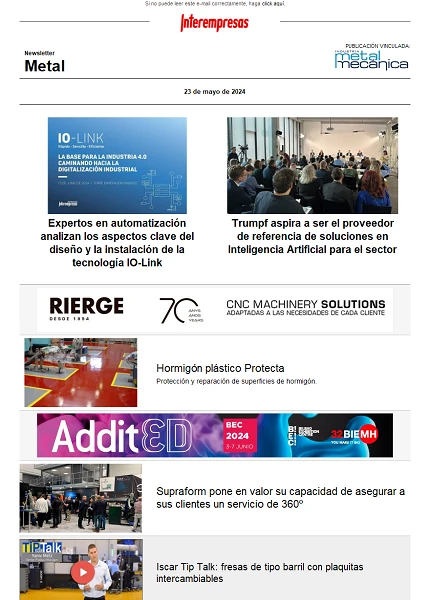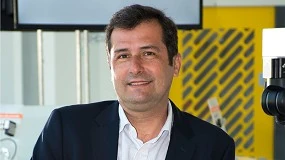On the occasion of SolidWorks World 2009, we have opportunity to chat with the director of everything that has to do with 'simulation' in SolidWorks
Interview with Kishore Boyalakuntla, director of the product 'simulation' in SolidWorks
February 10, 2009
How would you describe your role within the SolidWorks company?

I manage all SolidWorks simulation products. Basically, I am responsible for them. In the SolidWorks simulation area we have a team of r & d, which is who researches and develops the product; We have a team of product definition, that is which has decided earlier are the features that the product must have; and there is a Department of management of the product, which manages the entire line of product, those who are in contact with clients, speak with them, and deal with the details and investigate the new business opportunities.
What are their previous experiences in topics of simulation? What is your training?
My background is in engineering space. I've been in sales for many years, the technical part of the sale. I've been visiting many companies, for ten years, throughout all of North America (including the USA and Canada). It was therefore responsible for the area of simulation for North America. After this experience was when I moved to my current position.
I.e., that he has been working in SolidWorks, does for how long?
Twelve years, in total.
What you mean exactly 'simulation' in the context of SolidWorks?
We define the simulation as any process that, on the basis of the design data, performs calculations in the background and delivers results. For example, we have (AEF, [FEA, in English]) finite element method for structural analysis. This is simulation. The analysis of flows, also. The control of movements of a set, in which there is an engine, part of the simulation. The analysis of tolerances accumulated, also. Everything that makes calculations and provides results consider it to be a process of simulation.
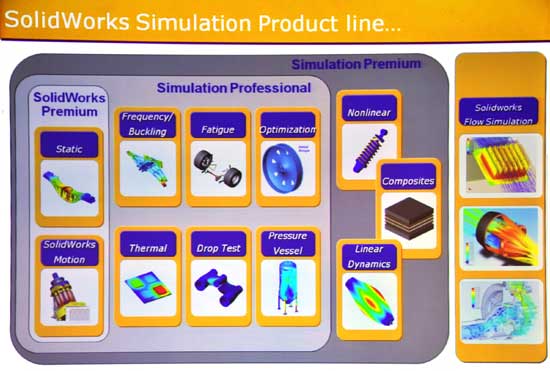
The simulation as a process after the design is usually thought. It is first designed, and later models and simulation. To what extent has this concept be broken? Simulation during the design options offer SolidWorks? How and why are used?
These are important questions. At the moment, SolidWorks can be used to design practically anything you want. We believe that, after having designed, everyone should be able to prove it. Our goal is to completely integrate the simulation with the CAD, in such a way that designers are using it almost without realizing it. It seems to us that the engineering should be carried out in this way.
We have not yet reached this point, some things are already working, but there are still many more to do. But yes we know that the objective is to integrate the simulation in the early stages of the design.
It seems that this is the tendency of all CAD… systems begin to simulate better as soon as possible.
This is, and we were those who started this trend. About five or six years ago. Now everybody seems you also want to do it. And that's a good thing. We believe that engineering should always develop in this way. Not only that, we are going to meet with many people that have not yet done análisis… that will do it for the first time. As a result, the tool should be able to advise. You know your product, you know what you have to do. What you don't know is like express it in terms of simulation. Therefore we are integrating 'advisers' to our product, ranging to ask things like "what you want to know?" "Are you interested in the deformation?" And then it will ask, "your piece, why is deformed?", "by the wind?, by temperature?, by forces?, does it deforms why there are pressures?" and after answering these questions, the system will advise you "If this is what you do;" This is probably what you need to do"." The system help, guides step by step, in a way that we can get a package whose use is pleasant for the designer.
The system will need to be 'clever'. At the moment, is still not as smart as that I like to.
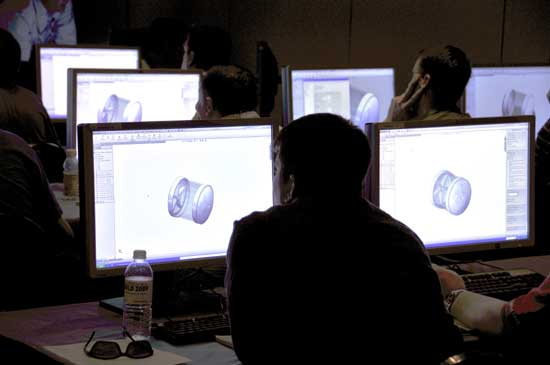
I have had opportunity to see a Ribbon of all the things that are simulated with SolidWorks and products of third parties in the area of exhibition what things can simulate various tools in SolidWorks? What things can be simulated with tools developed by its partners?
All simulation capabilities are integrated into SolidWorks, need not be outside. Which means that they are easy to use because they work the same way as SolidWorks. So that the user who knows SolidWorks is very easy to use the simulation.
As to the types of analysis that can be carried out: structural, dynamic, frequency [vibrations] buckling, cycle of life, fatigue,... and optimization. For example, you want to design something with a safety factor of 3, and ask you to SolidWorks to change the [diameter of a] hole in half to ¾ of an inch, or to change a certain thickness, or any set of dimensions within a certain range. The program simulates all combinations, and you will find which better satisfies the specified criteria, whatever.
We also have non-linear so-called simulations, that incorporates pieces of plastic or rubber parts viscoelastic, which you can compress but they recover its original shape. We also have analysis of flows. As for the movement, you can design a set that has an engine, and see how does it move the different pieces, and what stresses and deflections suffer.
Not do is flood, analysis of breakage and problems 'multifísicos', where there is a piece that is folded because of a certain flow, and this generates tensions within it. For this type of highly complex problems we have, within the group dassault systèmes Simulia, and its product, Abaqus. We work in partnership with them when it is necessary to offer high-end solutions. I believe that, within DS we have the full range of products to meet all the needs [in the field of simulation].
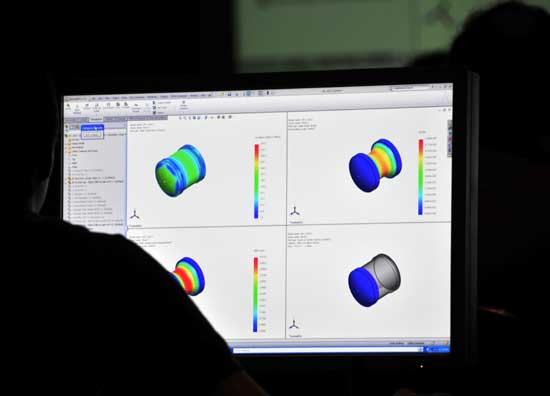
Yesterday I saw a demonstration of a company that has developed a product, very closely related to SolidWorks, to make simulations electromagnéticas…
Ah, you mean ems Works
Yes, exactly
I know very well. 7 Or 8 years ago they became partners of SolidWorks, and we vendíamos their products to customers. But after you do this for a few years, we realized that our SolidWorks skills do not understand the electromagnetic analysis. So we set ourselves to EMS and they decided that they are directly occupied the sales. Logically, we are still giving them support. We don't do anything within the field of the electromagnetic analysis. And our solution to the electromagnetic analysis is EMS Works.
There is the possibility that at some point SolidWorks decides to enter in this field, or in any other, and believed a confrontation with current partners? Or do there is a well-defined line that delineates which is the reserved field to third parties?
You will give an example. In the field of the analysis by finite element method, we have [among others] nei nastran and Ansys, companies as partners. And us okay. At SolidWorks we believe that competition is good. And that is good for customers, and to me it keeps me focused on what I have to do. A client may say that NEi is a better option to make analysis by EOF, while we can offer a solution for the same.
To answer your question: we have no intention of entering the area of electromagnetism, but let us suppose that we do. We will keep EMS Works as a partner, and the decision of the end customer will be is the product you want. We will never say to the client that we already have the solution and that they must buy the other. We will never do it. If the client chooses EMS Works, probably will have a good reason for this. So perfect, our ultimate goal is for the client to obtain a good solution.
A long time, the manufacturers of components (e.g., electric motors, linear actuators, pneumatic actuators,...) offering libraries that allow you to easily integrate them during the design process. These libraries also include the data necessary to be able to simulate the behavior of the components within a set?
It is an interesting question. Two years ago we began to ask different companies: what are your needs? your problems? And we realized that we had to speak to a team of design, and then a control equipment, and that both teams are not really communicated between them. We decided that this problem needed solution.
We have extensive experience in the field of the movement. And then there are companies like national instruments, LabView, or allen bradley [Rockwell Automation], and others, for example Microsoft looks set to also enter in this field, which basically involved in the control. We want to create a bridge between SMEs and the movement. For example, with our simulations of movement we can not simulate a system that accelerates, acquires a constant speed and then slows down. To do so would require simulate all a joint feedback on an ongoing basis. What we have done is to create a link with LabView (you can see a demonstration at the exhibition area).
Turning to the issue of the components, there are manufacturers who are providing data of mechanical parts, beyond its geometric shape? I mean its physical properties: thermal conductivity, resistance to the tracción… those parameters necessary to simulate different aspects of their behavior. Can they do?
Partly, Yes. For example, in the electronic field, through the files IDF is possible to indicate the properties of the different components, such as, for example, the value of the resistance. In the world of the structures, on the other hand, does not. Is it possible? Yes. When you save a piece in SolidWorks, you can incorporate data of their mechanical properties. And this piece can be saved then 3D ContentCentral [the web repository of SolidWorks, which collects standardised parts from different manufacturers]. In some cases the information is available, but in many cases, not yet. I would like to make this information always available.
Do are they carrying out some action to get parts manufacturers are incorporated such information?
Yes, we do. You can speak with John Slocum, responsible for 3D ContentCentral. It will be you that this is one of the actions carried out: get that manufacturers include physical properties within their designs.
In addition to everything that has already told us, what are the new developments that would expect to see in future releases of SolidWorks? What are the areas of development at the moment?
The answer has to be necessarily broad. Our goal is... my goal is... make that analysis will be pleasant to the designer and engineer. It can be that someone has never done analysis, or even as an engineer, but that is a brilliant mind in relation to the design of products. We want to create a product that allows everyone to achieve results. We are working with 'directors'. We are also working with new ideas as the composites [composite], because they are considered, typically, an area for analysts. But we believe that it has to be accessible to designers.
For example, the non-linear analysis is nothing special for me. Think like physicists, not as people who make software. If you work with plastics, to behave non-linear form in 90% of cases, you do not care how the software works, but what is the correct answer. We want to 'demystify'. We want that it would be so easy, once you have indicated to the software of what type of material it is, and the programme to ascertain the rest.
Another problem, while the analysis has become progressively, is that you can not try and solve a complete machine. But… in the end, that is precisely what the user wants: take into account the complete machine, 'connect' their parties as they will be in real life, and resolve it.
When I say that most of the world thought 'that's impossible'. We believe there is a way of doing this. When you build, the different pieces are welded, riveted, bolted, glued, glide among ellas… easy things. For some reason, people then makes it more complicated than it should be. I think that there should be a way in which we consider all this in the same way that is in real life. For example, that when you design you specify 'welding', 'welding', 'welding' (by points) and that the program know what 'solder'. When you are modeling a set, many times you are interested only in four parts. However, the pieces around will affect the behavior of these. If we can find a way to include all these pieces, so that all are 'light', except the four in what are interested, will find ways to easier to solve the problems. One of the difficulties in making analysis is to decide how to set the different elements. Burdens are not difficult. For engineers and designers who are facing for the first time the analysis, it is difficult to find the form of set pieces, where to fix them, how to unite them, where to unite them. We are working in this direction: facilitate the way to describe the interactions between the different parts of a whole, so that it is possible to take into account the influence of all of them, but at the same time concentrate on those that interest you.
What trends do you expected in the field of simulation?, in a broad context, within the world of engineering or science.
I think that SolidWorks we have demonstrated that simulation is already something in general use. So far our competition terrified customers telling them: "simulation is for analysts, if you use it, your designs will be Frankenstein". Our experience has shown that those who design tend to be the most capable of deciding that the result of a simulation is incorrect. I think that the simulation software has an excessive price. I believe that there will be a change and that will extend the offer, is rebajarán price, there will be more options and the simulation will be used in the early stages of the design. All engineers graduating currently known simulation tools. If you have used SolidWorks ever, they have an idea of simulation. As a result, not gives fear. And in a while, they ask you to their heads "we need simulation".
[Fluid] flow analysis used to be considered 'high end'. It is the segment where we have at the moment more growth. We set ourselves as the most easy simulation tool. More than structural analysis. When you do analysis of flows, the approach is easier, you don't have to worry about the restrictions. It is a problem easier to define. Then it will be completely non-linear, and the calculation process will take longer. But customers, give them the same.
In short, I believe that the trend is towards the widespread use of the simulation. And it is a trend that is accelerating.
In an environment of r & d, what part of his work does that 'Research' is, and what part 'Development'?
Logically, we simultaneously do r & d. The research has a long-term goal, while development is the next version. We collaborate with many universities, and funding to many university professors who are making, in good measure, basic research. An example: a long spoken of analysis by the method of finite elements without mesh.
Forgiveness?
'Without mesh'. Heard it for the first time, we were intrigued. Maybe we are still to many years of its implementation, but the author claims that it is feasible. There is an article in the Nafems. There are many changes underway. If someone thinks that the AEF in five years will be based on the AEF in is 50, which is prepared for a surprise. Many of these ideas never become really, but…
People don't realize that make something standard, commonly used, is much more difficult than simply make it easy to use. For example, in our case, the mallador [the part of the software decides as conform mesh that defines finite element] can not fail. This implies much r & d. The mallador should understand geometry, to do research between CAD + AEF. The part of the CAD has understanding of AEF, and vice versa.
To make a system to treat material compounds, we had a period of research of more than a year and a half, followed after a development of six months. We also have to do research to find out how to do something easy to use, for example: the test of free fall. Non-linear dynamics is considered. But for us it is: "indicates to the system that you drop something from a height of 4 feet", and is already. The research lasted two years, before we resolve in phase of development.
It is a continuous process. It is like a tree, when the fruit is ripe falls into the basket of development.
